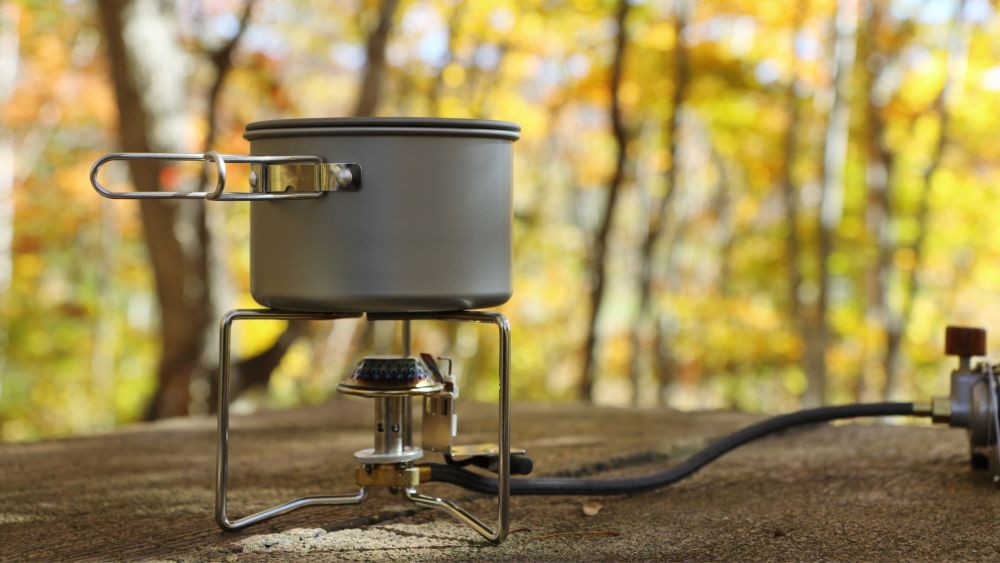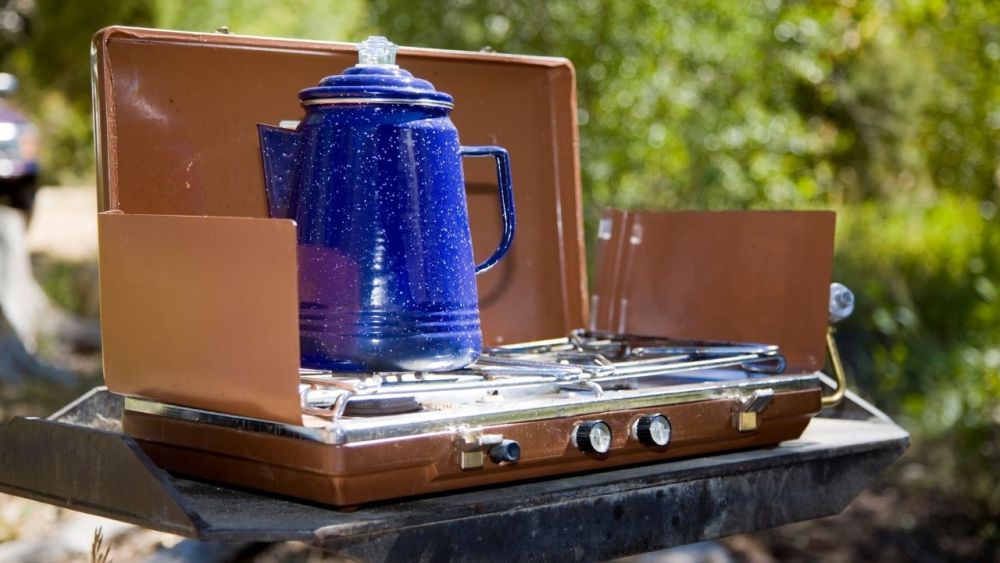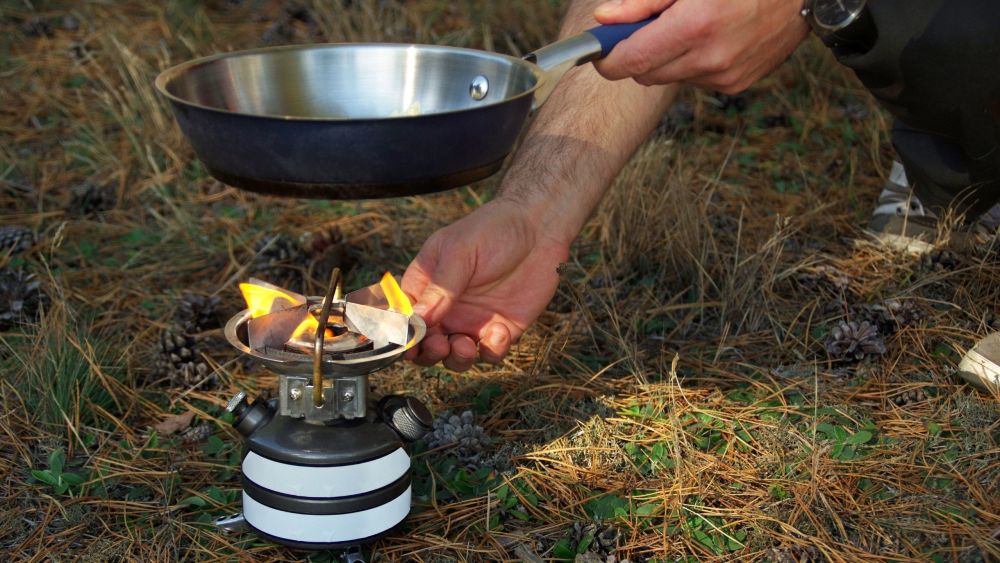Can camping stoves also be used indoors?
Wondering if it's possible to use camping stoves indoors as well? This article looks at the safety considerations, ventilation, and best practices.


From Martin Gebhardt. Check out my “About me” page.
👉 The key facts from this guide
- Camping stoves can be used indoors as long as they are used carefully and adequately ventilated.
- Alcohol, white gas, and propane stoves are recommended for indoor use.
- Safety risks include fire, carbon monoxide poisoning, and gas leaks.
- Cooking inside tents is dangerous and should be avoided, except in special situations such as mountaineering.
- Camping stoves are designed for outdoor use and not recommended for indoor use.
- Safe alternatives include denatured alcohol stoves, heat in cans, and ready-to-eat meals (MREs).
A camping stove is almost indispensable for life in the wilderness.
He is lighter than a grill with an open fire, more reliable, and you don't have to ignite a big, open fire.
Under certain conditions, a camping stove can also be used indoors.
We will now talk about when and how you can safely use your camping stove indoors, both in the apartment and in the tent.
Can camping stoves also be used indoors?
Before we get into the dangers and alternatives, I would like to first answer the question of whether camping stoves can also be used indoors.
Camping stoves can be used indoors as long as the stove is used with caution and has sufficient ventilation. Recommended options include alcohol, white gas, and propane stoves.
Attention: Operating in the apartment can be dangerous under the best conditions, so I clearly point out: Do not do it if you have no experience with camping stoves and are not familiar with your stove.

Safety first
Whether you believe it or not, fire is one of the most common hazards.
A house may be difficult to ignite with a camping stove, but with tents it is easier.
Modern tents use a highly flammable material to make the tent waterproof.
If you set a tent on fire, it can become a trap within minutes due to the high speed of flame combustion.
The more insidious danger, however, comes from carbon monoxide (CO). CO is an invisible, odorless gas that binds even better than oxygen to the hemoglobin in your blood.
As a result, it can accumulate in your blood, displacing oxygen from your body and causing dizziness and confusion.
If you stay in an environment containing CO, you can eventually become unconscious and die.
Carbon monoxide is produced during the combustion of carbon-containing fuels. However, it is a byproduct of incomplete combustion, which means that more efficient fires produce less CO than "dirtier" fires.
Consequently, some stoves are safer for indoor use, while others, less efficient stoves, are not.
A charcoal burner, for example, should never be used indoors under any circumstances.
You generate far too much CO. For the same reason, kerosene stoves should never be used in enclosed spaces.

Alcohol, white gas, and propane stoves, on the other hand, can be safely used in a ventilated room. Good examples of ventilated rooms are under a functioning chimney, in a fireplace, or in a room with open windows.
In my guide "Outdoor Stove - Which type suits you?" you will find a comprehensive overview of all stoves.
Finally, white gas and propane stoves can become leaky, causing gas to accumulate in a confined space. This can lead to a flash fire or even an explosion.
So make sure that the openings are sealed as tightly as possible.
And never leave your stove unattended. If it accidentally goes out, the room or tent can quickly fill with gas.
Special rules for tents
If you want to cook in a tent, the risk of fire and CO is significantly higher.
Ultimately, there is no reason to justify the risk of operating an oven in such a small, flammable space.
The only exception is mountaineers who may literally hang on the edge of a cliff. But in this case, we are talking about well-experienced campers.
But that doesn't mean you have to cook in the rain. The upsides (storage spaces that are not inside the inner tent) of some large tents offer a good compromise.
You can protect yourself from the elements and escape quickly if necessary. And when the flap is fully open, you also have enough ventilation for safety.
Another problem is cooking in bear country. Bears have an extremely acute sense of smell and are even attracted to the residual odor that remains for hours after cooking. If you have cooked in your tent, it can be a rude awakening.
What are the disadvantages of using a camping stove indoors?
Camping stoves are designed for outdoor use. They are designed for use in extreme conditions.
Camping stoves are not designed for indoor use, so it is not recommended to use them inside the house. There are two main reasons for this: safety and efficiency.
Camping stoves have open flames, so they cannot be used in a poorly ventilated room or where there is a risk of carbon monoxide poisoning.
The second reason why camping stoves should not be used indoors is that they are not efficient enough to heat the interior.
Safer alternatives to propane
If you want to use your camping stove indoors, there are alternative stoves that are much safer than propane or charcoal. Here are a few of the most common ones:
Cooker with denatured alcohol / spirit: These cookers burn very cleanly, and since they use a liquid fuel, there is no risk of gas leakage. However, you have to let the cooker cool down before refilling, which can be annoying if you run out of fuel while in the middle of preparing a meal. The company Esbit produces a nice little five-piece set with a brass burner.
Heat in cans: Fuel paste in cans is a condensed alcohol gel. Simply remove the lid, ignite the paste with a match or lighter, and you can start cooking. But be careful in well-lit environments: This fuel has an almost transparent flame that can be almost invisible on a sunny day. All you need for this is this can here.
Ready-to-eat meals (MREs): MREs are standard army rations and, as the name suggests, completely ready to eat. They may not be as tasty as a home-cooked meal, but you can easily take them on the go, and they can last for years as emergency supplies at home.


Author of the guide
Martin Gebhardt
Hey, I'm Martin. On my blog, you will learn the basics and numerous details about living in the wild. I think survival, bushcraft and the good life in nature are the keys to happiness. Find me here on Instagram or on YouTube. You can find more about my mission on the About Me page.
Was this guide helpful?
25 people found this guide helpful.
4.70 out of 5 points (27 Ratings)
Comments (0)
This post may contain affiliate links. So if you click on the links and make a purchase, I will receive a small commission at no additional cost to you. Click here, to learn more about it.



